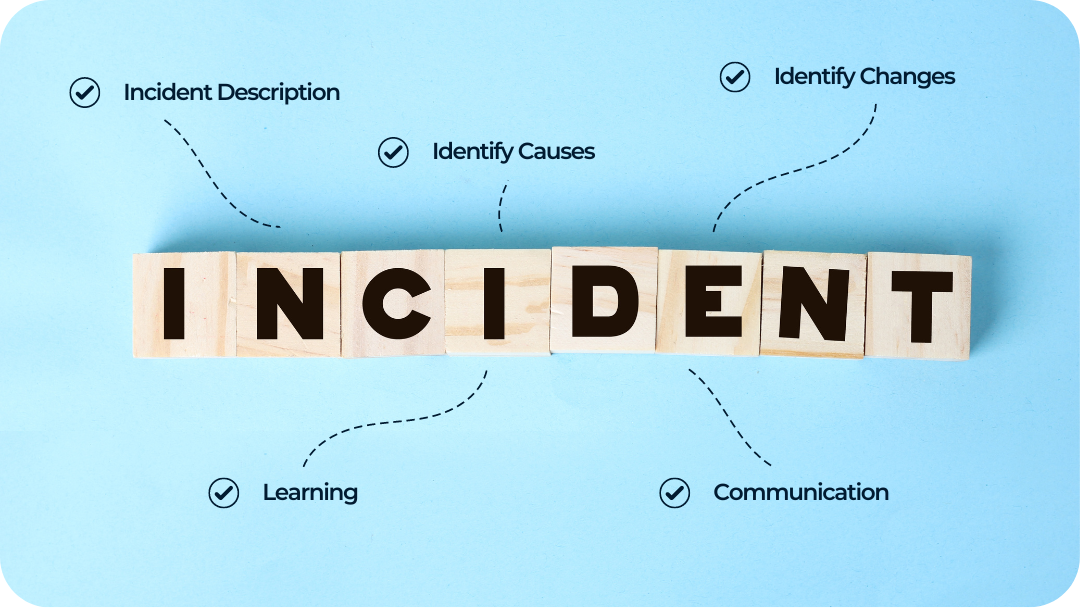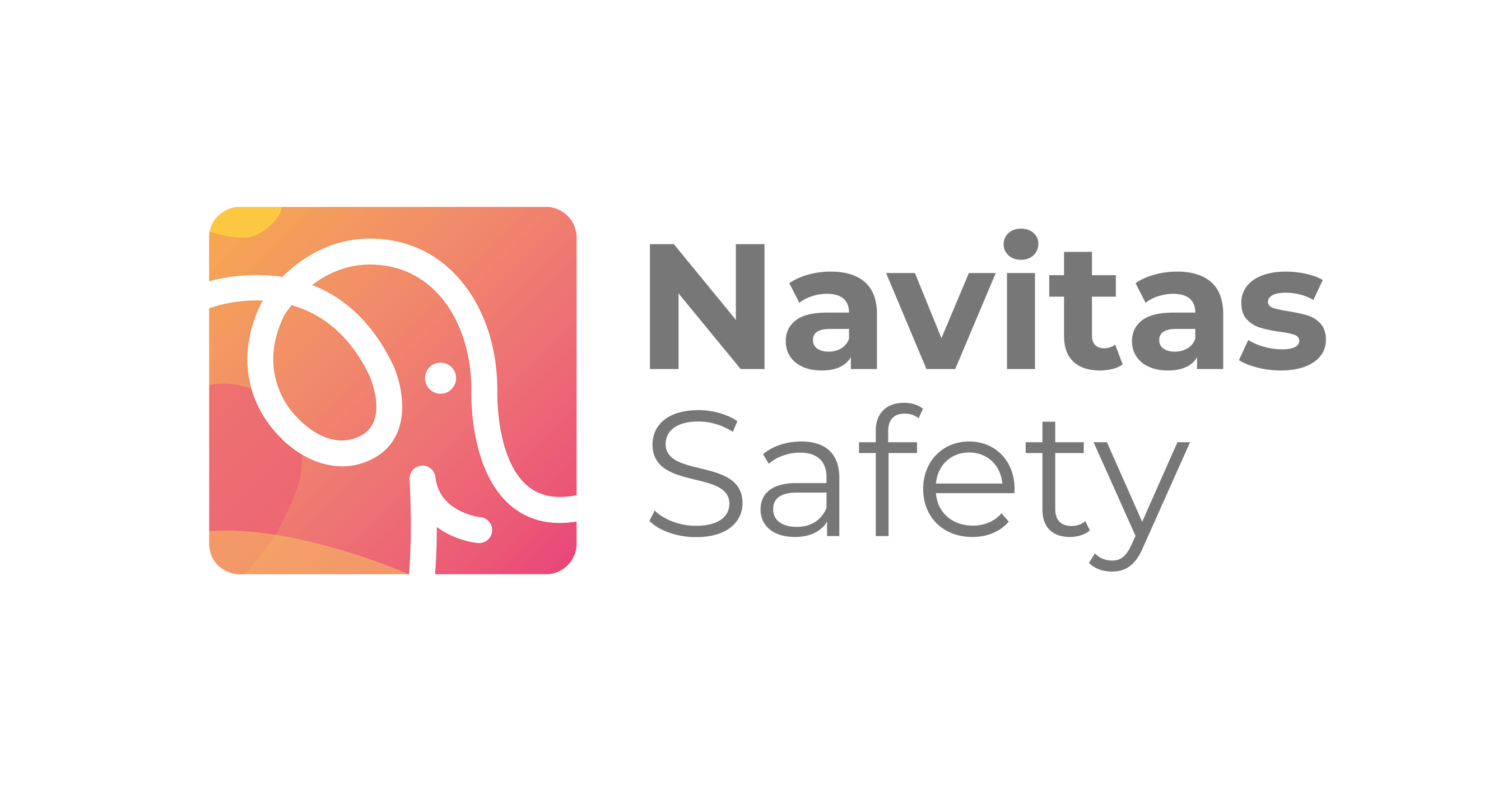In today’s landscape of workplace safety, the importance of an effective incident reporting procedure can’t be overstated. For instance, it serves as a vigilant guardian, protecting your workplace from unforeseen hazards and fostering a culture of continuous improvement.
In this blog, we will delve into the intricate process of developing a robust incident reporting protocol. By following this guide, you’ll be paving the way for a safer, more informed, and proactive work environment.
Benefits of Implementing an
Incident Reporting Procedure
Implementing a robust accident and incident reporting procedure offers numerous benefits:
- Historic Database: It provides insights into weak safety areas, allowing organisations to focus their efforts on improvement.
- Reminder of Hazards: Incident reports serve as reminders of potential hazards, promoting ongoing vigilance.
- Monitoring and Root Cause Analysis: Reporting incidents helps monitor recurring problems and allows us to conduct root cause analysis, leading to corrective actions.
- Preventive Action: Addressing problems and root causes before they escalate into more serious incidents.

4 Key Components to Remember
Notably, an effective incident investigation process comprises four key components:
- Incident Description: Clearly document what happened and gather all available information.
- Identification of Causes: Next, identify the factors that contributed to the incident.
- Identification of Changes: Then determine necessary organisational and process changes to prevent similar incidents.
- Learning: Finally, gain insights from the incident to drive continuous improvement.
Also, another important component is continuous communication with deadlines. This is vital to come to the final conclusion of an incident in a reasonable amount of time, as you must communicate with yourself, the injured person and any other third parties involve.

The Blueprint for Successs
The blueprint for a successful incident reporting procedure unfolds through the following 6 steps:
Find the Right Person
Firstly, the initial step in the incident reporting procedure is having the right person for the job. This individual should be well-trained in health and safety and how to report an incident, as well as being proactive and having good knowledge and experience. This can be an individual within your organisation. Alternatively, it can be a third party safety expert. Our Safety Services team offer Managed Incident Support, from developing your incident reporting protocols to incident triage and support.
Log the Incident
Secondly, once an incident occurs, it’s crucial to log all essential information accurately. This includes: the injured person’s name, date of birth, gender, incident date, date reported, the person reporting, type of injury, and a detailed description of what happened. This log becomes the foundation for further investigation and analysis. Our Incident and Investigations module allows you to complete this step digitally, on pre-built incident templates, with access levels and actions determined by hierarchy controls and customisable process settings.
Start a Formal Investigation
Following on from the incident, the formal investigation phase involves gathering all relevant documents, such as witness statements, policies and training records. Similarly, you can also gather visual evidence in the form of photographs and a detailed plan of the incident area to help recreate the scene. Be sure to ask any additional questions you feel necessary to clear up any ambiguities in the information gathered.
Is it Reportable?
Regardless of whether an incident is reportable under relevant regulations, steps two and three should be taken. However, step four involves determining whether the incident needs to be escalated to the Health and Safety Executive (HSE).
Fill in Your Forms
Consequently, if the incident is reportable, the next step involves completing the necessary forms, usually an online form stored in the HSE’s RIDDOR database. Then the incident is officially documented and you have ensured that it is recorded for future reference.
Review Your Policies and Risk Assessments
After an incident, it’s always good practice to review the relevant risk assessments and internal policies. As a result, you can identify potential gaps and weaknesses that contributed to the incident. Our safety experts support you with this and ensure you minimise any risk to your teams and customers. By addressing the issues found, your organisation can prevent similar incidents from occurring in the future.

Step-by-Step: Creating an Effective Incident Reporting Procedure
Step 1: Establishing Incident Categories
1. Near Miss Report
Near misses are events where no one was injured, but given a slight change in timing or action, someone could have been. Because of this, it’s important for safety professionals to report such events to help put corrective actions in place so no one faces such a potential risk in the future.
2. Injury and Lost Time Incident Report
Another type of incident report – this one for recording any injury which has resulted in lost time. Injuries can occur on-site when certain precautions are not taken, PPE is not worn, or other variables beyond our control come into play. In particular, these incidents must be reported immediately.
3. Exposure Incident Report
Next, exposure incident reports. Exposure to harmful chemicals or substances may occur while on the worksite such as asbestos, carbon monoxide, and more. Therefore, safety professionals must report such incidents quickly to help keep others safe from harm.
4. Fatalities
Unfortunately, these are extreme events which result in death or serious permanent injury. Fatalities are unexpected and can include occurrences such as natural disasters, illness outbreaks, slips, trips and falls, struck bys, etc. Asa a result, you must report these events to strengthen your safety program and take the steps needed to implement specific actions to protect workers, in the event such unpredictable events happen again. Furthermore, to help prevent fatalities, you can promptly resolve issues recorded in near miss reports to mitigate the risk.
Step 2: Creating Clear Reporting Channels
Secondly, to ensure an effective incident reporting procedure, establishing accessible reporting channels and escalation processes is essential.
Reporting Channels:
→ Incident Report Book: A tangible record for reporting incidents promptly.
→ Online Reporting System: Businesses can utilise a digital management tool to create a centralised reporting database, such as our Incident Management Software.
Guidance and Escalation:
The Health & Safety Executive (HSE) is the governmental body of the UK that provides clear guidance on incident reporting. They are also the escalation point for any RIDDOR incident which must be reported within 15 days of the incident.
Step 3: Training Employees on Incident Reporting
Training employees on incident reporting ensures that everyone in your workplace knows how to complete a clear and concise incident report if they’re involved in an accident or incident at work. Plus, educating employees about safety procedures is vital to fostering a culture of safety.
Here’s how to achieve this:
→ Practice: Reporting Near Misses is a prime tool to train employees on what information they must obtain. Reporting Near Misses on a regular basis will provide confidence and capability.
→ Training: The minimum training expected would be a Level 2 Health & Safety course. Additionally, other resources include well renowned organisations such as: IHASCO, IOSH, NEBOSH, OSHA, and CPD UK. These provide extensive training on incident reporting awareness.
Step 4: Incident Documentation and Data Analysis
The review and analysis of incidents should be viewed as a key tool to enhance quality improvement in a service. Data analysis assists businesses in:
- Finding out what happened and why it happened
- Recognising factors that contributed or influenced the occurrence
- Identifying common themes e.g. trends in falls patterns
- Identifying required areas for review and improvement and allow for controls to be implemented to reduce likelihood of recurrence
- Making informed decision making
- Enabling Senior Management to have an adequate oversight of the issues in which the organisation currently faces
- Identifying learning that can be gained in order to minimise the risk of a similar incident occurring in the future
So, monitoring and analysing of incident data is crucial to reduce the number of incidents from happening or reoccurring.
Step 5: Incident Response and Follow-Up Actions
Every incident, although different, must go through the same procedure that assists in mitigating future risk:
- Triage: Understanding the incident and assess its impact.
- Analyse: Capturing and analysing data.
- Contain: Limiting the incident’s impact, preventing the spread of problems.
- Eradicate: Fully resolving the incident and confirming successful remediation
- Review & Redeem: Evaluating response, implementing improvements and recovering.
Subsequently, timely follow-up actions, based on severity and likelihood of risk, are crucial in reducing and mitigating the risk as low as reasonably practicable.
Best Practices for Maintaining an
Effective Incident Reporting Procedure
Effective incident reporting requires best practices in documentation and communication. You should use a standardised format for incident records, ensuring they include essential details like date, time, incident description, affected systems, resolution steps, and preventative measures.
Next, keep communication straightforward and concise. Maintain a centralised incident log for easy access and management. Regular, transparent communication with stakeholders about incident status, updates, resolution estimates, and preventative actions is crucial.
Finally, post-incident review helps identify root causes and improve future response, supporting the overarching goal of not only resolving but learning from incidents to prevent recurrence.
You can do all of these essential practices within our Incident Management Software, allowing for digitised, accurate and traceable procedures.

An effective accident and incident reporting procedure is a cornerstone of workplace safety and continuous improvement.
In essence, for you to maintain a systemically successful incident reporting procedure it requires a proactive approach to foresee a hazard before it exists, and a reactive approach when an incident arises from a hazard. Both require competency, communication and engaging support in order to report appropriately.
By diligently following the above steps to create, complete and maintain an effective incident reporting protocol, businesses can create a safer and more secure environment.
Remember, incident reporting isn’t just about addressing problems; it’s about preventing them and fostering a proactive and vigilant workplace.
If you need help with your safety processes, speak to a member of our safety team who will be able to advise you on how to operate safely.





